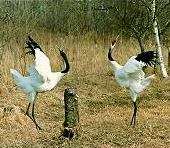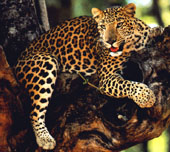
 Dragon (Long)
Dragon (Long)This is a big question for people studying Kung Fu. I never knew until I started searching the Internet and library books to find out exactly what it is I'm studying and my journey will probably go on forever. But it's something that must be done. After all, would you, as students, ever turn around baffled having realised you don't know what it is you're studying. Well, here is a condensed version of what people hold to be the history of Hung Gar Kung Fu:
Although Kung Fu began in Ancient China in the Shaolin Temple in Henan, its origins actually spread slightly further back in time to India and the monk known as �Bodhidharma� � known to the Chinese as �Dat Mo�. Dat Mo�s original intention had been to teach the old monks who lived in the Henan Temple about Chuan Buddhism and the art in which meditation could bring harmony between the body, the mind and the spirit � a technique known as �qigong.� During their training, though, the monks often became tired and so their Sifu � "Father teacher" � was forced to introduce a method of increasing the old monks� physical fitness in between their meditations. He introduced a system of exercises and muscle change actions that went on to become the World famous Shaolin Temple Boxing System. As the skills were passed from generation to generation they became refined and extended into a form of self-defence. This self-defensive style was primarily based on the five animals:

 Dragon (Long)
Dragon (Long)
(He) Crane 


 Tiger (Hu)
Tiger (Hu)
(Bao) Leopard 


 Snake (She)
Snake (She)
And also the five elements:
 Metal (Jin)
Metal (Jin)
Wood (Mu)
 Fire (Huo)
Fire (Huo)
Water (Shui)
 Earth (Tu)
Earth (Tu)
In the early days of Martial Shaolin, this self-defence was only taught to monks and priests. However, during the time of the Manchu (1644 � 1911!) when the Mongolians invaded and captured all of China, the monks broke their principals and taught their Shaolin fighting techniques to farmers to help them fight against the new regime for the glory and recapture of China. During this time, it was said that Hung Hei Guen, a follower of the Shaolin style � particularly the �Tiger�s Claw� style � became infatuated with Fong Wing Chun, an exceptional artisan of the �White Crane� style during a traditional Lion Dance when she scolded him for accidentally kicking her. He later went on to marry her and then merged their arts to form what is now a core of Hung Gar Kung Fu.
During the following centuries the style of Hung Gar has been revised and improved using other types of Shaolin Kung Fu. Various masters have used their arts to increase the technicality of the style whilst not straying too far from Hung Hei Guen�s original guide-lines.
Hung Gar Kung Fu nowadays incorporates both external and internal methods. It emphasises strong stances, long and short hand techniques which use straight, circular and angular movements, making Hung Gar a variable martial art in its application. The main intention of the art is to develop coordination and efficiency of movement. This notion has been proven as recent research conducted by the World Federation of Chinese Martial Arts indicated that Hung Gar possesses more intricate hand techniques than any other Chinese art. Hung Gar has been the most popular of the Five Family Fists (The others being Lau, Choy, Li and Mok) practiced in China for many years now and is also the most physically gruelling, relying on its students strength of body and ability to separate mind from matter. 'Sam Sing' - Three Star Blocking - toughens the arms beyond that of the pain threshold. The 'Ma Bo' - Horse Stance - enforces good balance, posture, strength of legs and supposedly "grounds the practitioner's Ch'i" making them heavy and difficult to move. 'Kui Sau' - Chinese Bridge Hands - strengthen the upper body to the point where great weights can be lifted without difficulty. These are merely a few of the reasons why Hung Gar is the most difficult, and the most loved of the Chinese Family Arts.